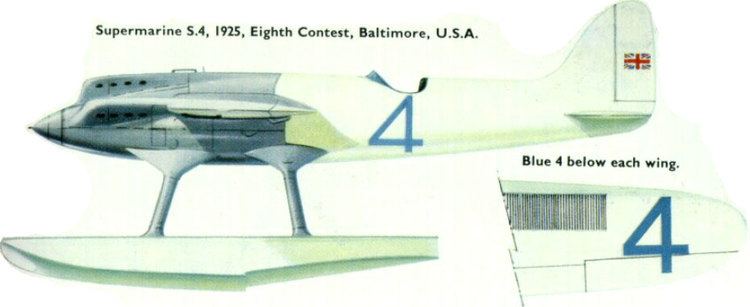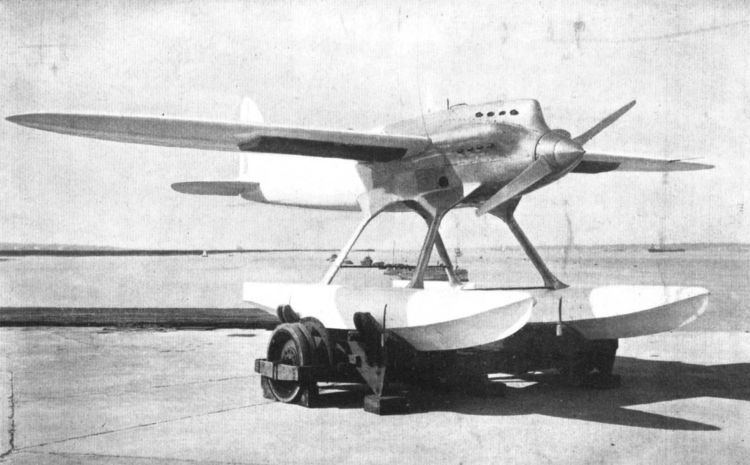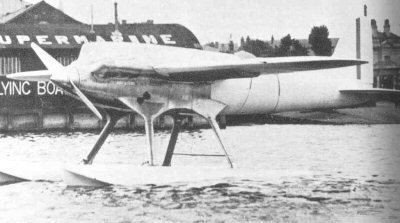Top speed 385 km/h Length 8.12 m Retired 1925 | Wingspan 9.33 m Introduced 1925 First flight 1925 | |
 | ||
The Supermarine S.4 was a 1920s British single-engined single-seat monoplane racing seaplane built by Supermarine to compete in the 1925 Schneider Trophy. It crashed and was destroyed before the competition started.
Contents

Design and development

The Supermarine S.4 was designed by R. J. Mitchell to compete in the 1925 Schneider Trophy race. Built by Supermarine at Woolston, the S.4 was primarily an all-wooden monoplane seaplane, although a mixed wood-metal construction fuselage was mated to an unbraced cantilever wing and monocoque fuselage, powered by a 680 hp (507 kW) Napier Lion VII engine. As an exceptionally "clean" monoplane seaplane, the S.4 design was in marked contrast to the biplane Supermarine Sea Lion flying boats which Mitchell had designed for previous Schneider Trophy races, which won in 1922 and came third behind the American Curtiss CR seaplanes in 1923.
Operational history
Registered G-EBLP, the S.4 first flew on 24 August 1925. On 13 September 1925 on Southampton Water, it raised the world's seaplane speed record (and the British speed record) to 226.752 mph (365.071 km/h).

With high hopes of a British victory, the S.4, together with two Gloster III biplanes, was shipped to the United States of America for the 1925 race. During trials at Bay Shore Park, Baltimore on 23 October 1925, piloted by H. C. Biard, it was seen to sideslip into the water from 200 ft (61 m) and was wrecked. Biard, who survived with two broken ribs, stated that he lost control following violent wing vibration. The race was won two days later by Lieutenant James Doolittle, flying a Curtiss R3C at an average speed of 232.573 mph (374.443 km/h), faster than the S.4's world record of a month before.
Most sources have suggested the accident was due to flutter.
Specifications
Data from Supermarine Aircraft since 1914
General characteristics

Performance
